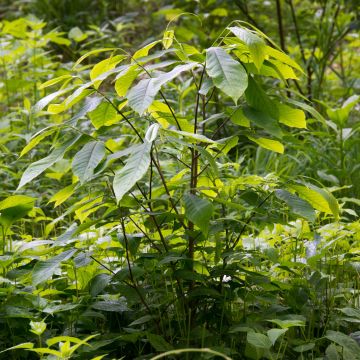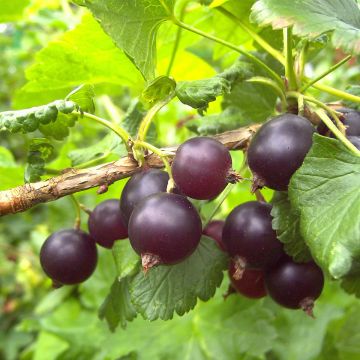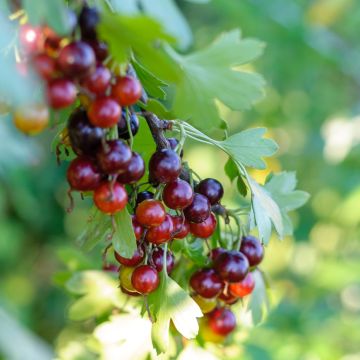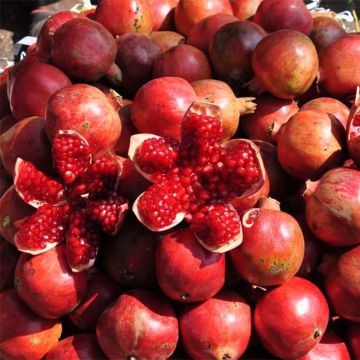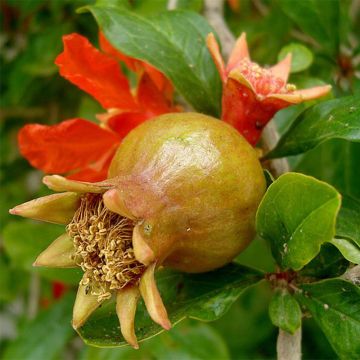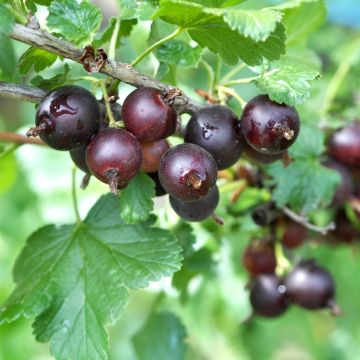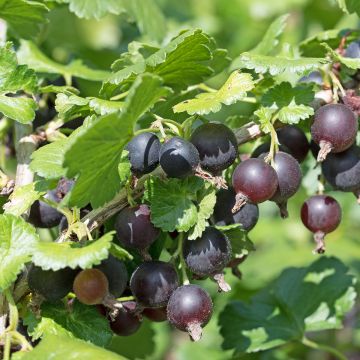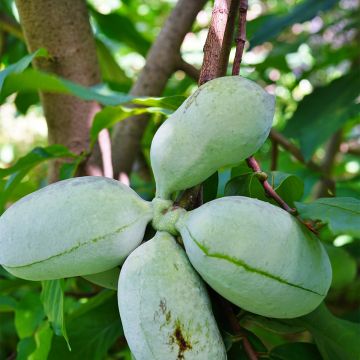Shipping country and language
Your country of residence may be:
Your country of residence is:
For a better user experience on our website, you can select:
Your shipping country:
Andorra
Austria
Belgium
Bulgaria
Canada
Chile
Croatia
Cyprus
Czechia
Denmark
Estonia
Finland
France
Germany
Greece
Hungary
Iceland
Ireland
Italy
Latvia
Lithuania
Luxembourg
Malta
Monaco
Netherlands
Poland
Portugal
Romania
Slovakia
Slovenia
Spain
Sweden
Switzerland
United Kingdom
We only deliver seed and bulb products to your country. If you add other products to your basket, they cannot be shipped.
Language:
French
German
Spanish
English
My Account
Hello
My wish lists
Plantfit
Log in / Register
Existing customer?
New customer?
Create an account to track your orders, access our customer service and, if you wish, make the most of our upcoming offers.
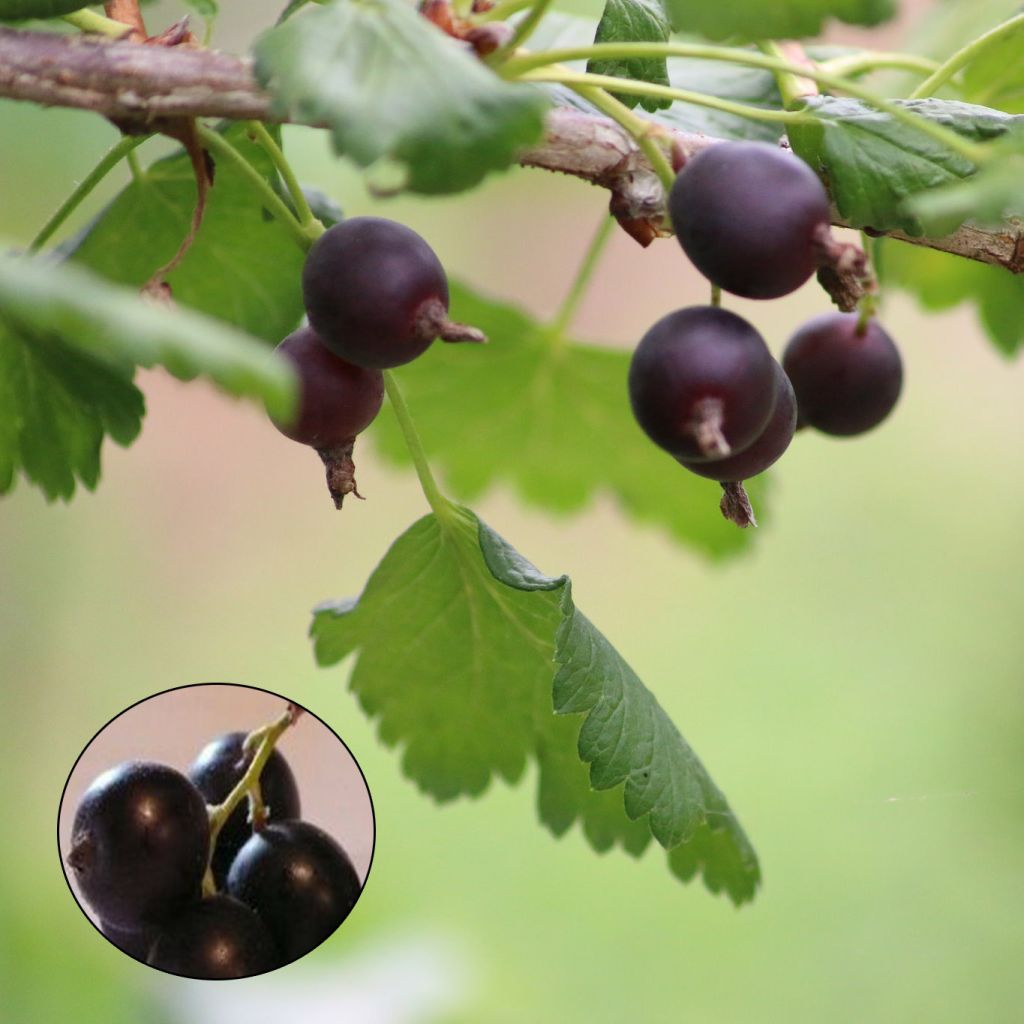

Caseille Josta - Ribes Hybride - Casseille
Blackcurrant Jostaberry
Ribes nigrum x divaricatum Josta
Superbe plant reçu très vite et très bien emballé ! Nombreuses tiges et belles feuilles vertes.
Marie, 16/05/2021
Why not try an alternative variety in stock?
View all →Order in the next for dispatch today!
Dispatch by letter from €3.90.
Delivery charge from €5.90 Oversize package delivery charge from €6.90.
More information
This item is not available in your country.
Schedule delivery date,
and select date in basket
This plant carries a 6 months recovery warranty
More information
We guarantee the quality of our plants for a full growing cycle, and will replace at our expense any plant that fails to recover under normal climatic and planting conditions.

Description
The Josta Gooseberry (Ribes hybrid) or Jostaberry is a variety that produces berries resembling large blackcurrants, with a skin that is black and a texture similar to that of gooseberries. The name "Josta" comes from the contraction of "cass-is" and "gros-eille" (French for blackcurrant and gooseberry). The fruits have a tangy flavour and a lighter fragrance than blackcurrants, making them perfect for jams, sorbets, or pies. Ideally, they should be planted in autumn or spring with regular watering for a harvest in July.
The Josta Gooseberry belongs to the Grossulariaceae family and is the result of a cross-breeding between the blackcurrant and a close relative of the gooseberry. It is a thornless bush with a spreading and bushy habit, reaching a height of 2m (7ft) and a width of 1m (3ft). It is very hardy, withstanding temperatures as low as -18°C (-0.4°F). Its rounded lobed leaves are deciduous and slightly fragrant. Flowering occurs in spring, around April - May, with small dark red flowers. This is followed by the formation of short clusters, with berries resembling large blackcurrants, with a dark and smooth skin and a texture similar to that of gooseberries. The harvest is usually abundant and staggered depending on the ripeness of the fruits. Josta Gooseberries, with their tangy flavour and lighter fragrance than blackcurrants, are perfect for jams, ice creams, sorbets, and pies. They can also be frozen.
The Josta Gooseberry is self-fertile and does not require another plant for pollination. However, it is recommended, when space allows, to alternate varieties and species to promote pollination and reduce the risk of diseases. In the garden, create a small edible hedge by mixing Josta Gooseberries, raspberries, and gooseberries, for example, or place the Josta Gooseberry within a flower bed.
Plant habit
Fruit
Flowering
Foliage
Botanical data
Ribes
nigrum x divaricatum
Josta
Grossulariaceae
Cultivar or hybrid
Planting and care
Planting is ideally done in autumn, or alternatively in spring with regular watering. Plant the bush in ordinary, well-drained, deep soil, even if it is heavy and clayey. It appreciates moist soils if they are not constantly wet. A non-direct sunlight exposure, or partial shade, in a place sheltered from strong winds, will yield good results. If you plant multiple plants, space them 1.50 to 2 m (5 to 7ft) apart.
Dig a hole, incorporate compost and crushed horn into the soil, place the young plant burying the collar slightly and cover with soil. Water regularly during the first year after planting and only in case of high temperatures. Install mulch at the base to keep it cool in summer. Apply a bit of compost every year, in spring or autumn. Do not work the soil too much as the bush has shallow roots.
It is an accommodating bush, not very susceptible to powdery mildew. It has a few enemies, such as aphids, which can be eliminated by spraying soapy water or a garlic decoction. In June-July, protect the harvest with nets to counter the birds' greediness.
Planting period
Intended location
Care
- , onOrder confirmed
Reply from on Promesse de fleurs
Haven't found what you were looking for?
Hardiness is the lowest winter temperature a plant can endure without suffering serious damage or even dying. However, hardiness is affected by location (a sheltered area, such as a patio), protection (winter cover) and soil type (hardiness is improved by well-drained soil).

Photo Sharing Terms & Conditions
In order to encourage gardeners to interact and share their experiences, Promesse de fleurs offers various media enabling content to be uploaded onto its Site - in particular via the ‘Photo sharing’ module.
The User agrees to refrain from:
- Posting any content that is illegal, prejudicial, insulting, racist, inciteful to hatred, revisionist, contrary to public decency, that infringes on privacy or on the privacy rights of third parties, in particular the publicity rights of persons and goods, intellectual property rights, or the right to privacy.
- Submitting content on behalf of a third party;
- Impersonate the identity of a third party and/or publish any personal information about a third party;
In general, the User undertakes to refrain from any unethical behaviour.
All Content (in particular text, comments, files, images, photos, videos, creative works, etc.), which may be subject to property or intellectual property rights, image or other private rights, shall remain the property of the User, subject to the limited rights granted by the terms of the licence granted by Promesse de fleurs as stated below. Users are at liberty to publish or not to publish such Content on the Site, notably via the ‘Photo Sharing’ facility, and accept that this Content shall be made public and freely accessible, notably on the Internet.
Users further acknowledge, undertake to have ,and guarantee that they hold all necessary rights and permissions to publish such material on the Site, in particular with regard to the legislation in force pertaining to any privacy, property, intellectual property, image, or contractual rights, or rights of any other nature. By publishing such Content on the Site, Users acknowledge accepting full liability as publishers of the Content within the meaning of the law, and grant Promesse de fleurs, free of charge, an inclusive, worldwide licence for the said Content for the entire duration of its publication, including all reproduction, representation, up/downloading, displaying, performing, transmission, and storage rights.
Users also grant permission for their name to be linked to the Content and accept that this link may not always be made available.
By engaging in posting material, Users consent to their Content becoming automatically accessible on the Internet, in particular on other sites and/or blogs and/or web pages of the Promesse de fleurs site, including in particular social pages and the Promesse de fleurs catalogue.
Users may secure the removal of entrusted content free of charge by issuing a simple request via our contact form.
The flowering period indicated on our website applies to countries and regions located in USDA zone 8 (France, the United Kingdom, Ireland, the Netherlands, etc.)
It will vary according to where you live:
- In zones 9 to 10 (Italy, Spain, Greece, etc.), flowering will occur about 2 to 4 weeks earlier.
- In zones 6 to 7 (Germany, Poland, Slovenia, and lower mountainous regions), flowering will be delayed by 2 to 3 weeks.
- In zone 5 (Central Europe, Scandinavia), blooming will be delayed by 3 to 5 weeks.
In temperate climates, pruning of spring-flowering shrubs (forsythia, spireas, etc.) should be done just after flowering.
Pruning of summer-flowering shrubs (Indian Lilac, Perovskia, etc.) can be done in winter or spring.
In cold regions as well as with frost-sensitive plants, avoid pruning too early when severe frosts may still occur.
The planting period indicated on our website applies to countries and regions located in USDA zone 8 (France, United Kingdom, Ireland, Netherlands).
It will vary according to where you live:
- In Mediterranean zones (Marseille, Madrid, Milan, etc.), autumn and winter are the best planting periods.
- In continental zones (Strasbourg, Munich, Vienna, etc.), delay planting by 2 to 3 weeks in spring and bring it forward by 2 to 4 weeks in autumn.
- In mountainous regions (the Alps, Pyrenees, Carpathians, etc.), it is best to plant in late spring (May-June) or late summer (August-September).
The harvesting period indicated on our website applies to countries and regions in USDA zone 8 (France, England, Ireland, the Netherlands).
In colder areas (Scandinavia, Poland, Austria...) fruit and vegetable harvests are likely to be delayed by 3-4 weeks.
In warmer areas (Italy, Spain, Greece, etc.), harvesting will probably take place earlier, depending on weather conditions.
The sowing periods indicated on our website apply to countries and regions within USDA Zone 8 (France, UK, Ireland, Netherlands).
In colder areas (Scandinavia, Poland, Austria...), delay any outdoor sowing by 3-4 weeks, or sow under glass.
In warmer climes (Italy, Spain, Greece, etc.), bring outdoor sowing forward by a few weeks.
